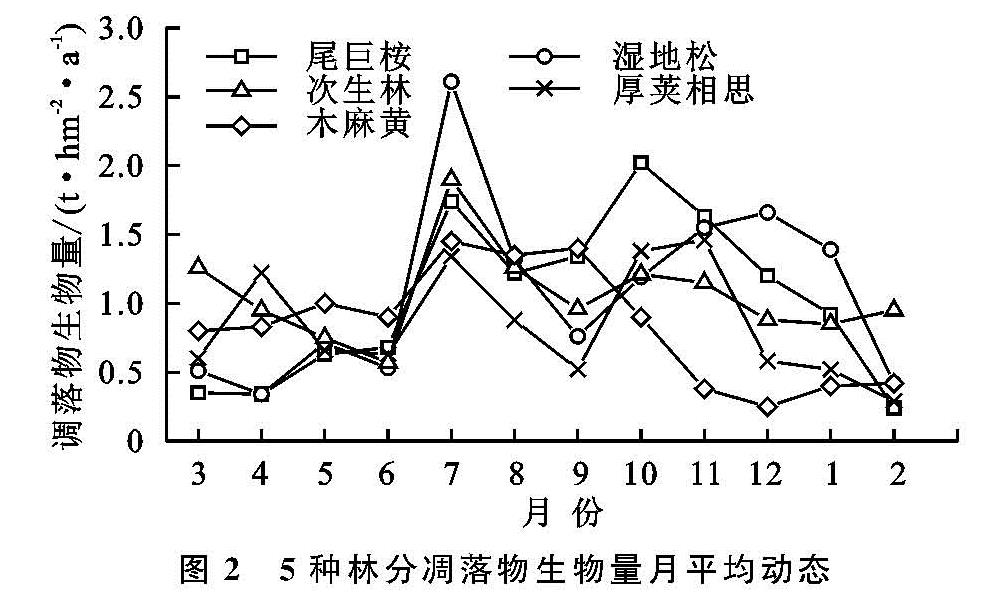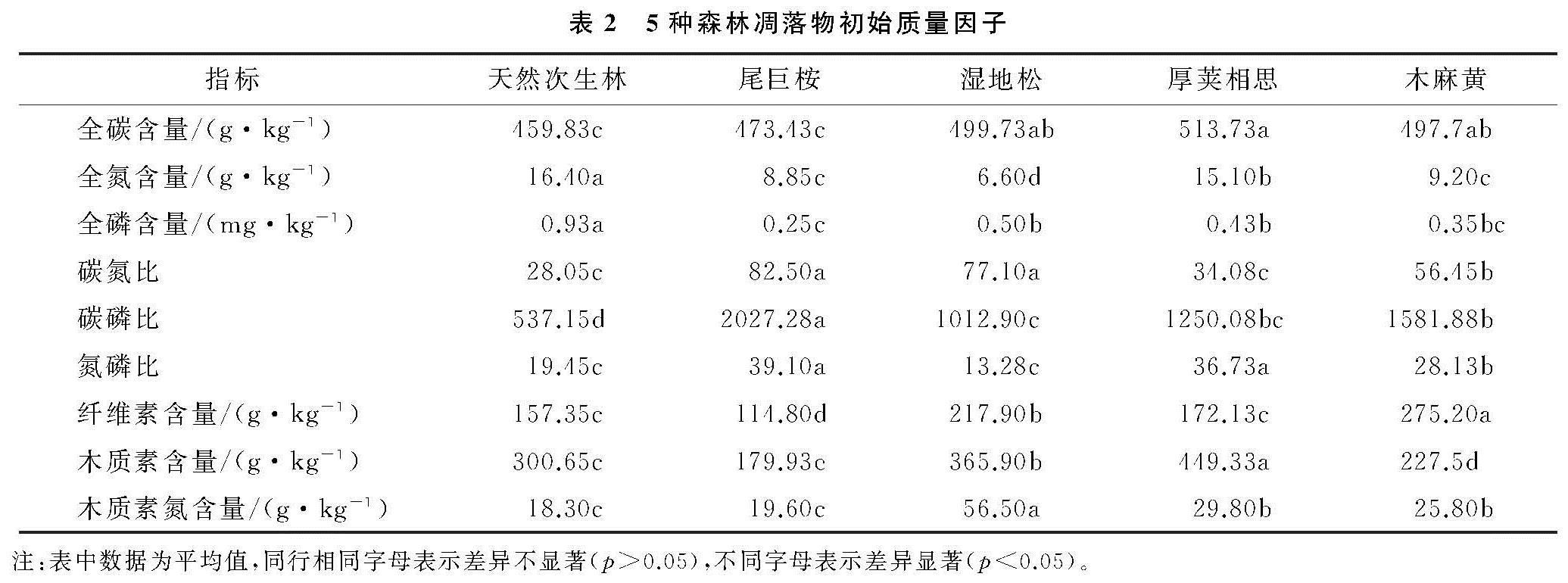凋落物分解是植物向土壤转移养分的重要环节,也是生态系统维持自肥能力的关键因素,是森林生态系统养分的主要来源,可满足植物生长所需总量的69%~87%,森林每年通过凋落物分解归还土壤的总氮量占森林生长所需总氮量的70%~80%,总磷量的65%~80%,总钾量的30%~40%[13]。在土壤养分贫瘠、生物初级生产力低下、外来养分输入匮乏的生态系统,凋落物在维持生态系统物质平衡、改善土壤肥力等方面意义重大[14-18],分解速率的差异直接影响养分归还的效率。本研究所选森林类型中4种为人工林,1种天然次生林,人工林中包括2个固氮树种(厚荚相思、木麻黄),1个针叶树种、1个速生树种,是防护林建设最常用的树种类型,适应性强,在福建省沿海地区应用比较广泛。除了天然次生林外,人工林下植被稀疏,种类及生物量较低,短期内对土壤肥力的影响不大[19]。5种森林的凋落物失重率均满足Olson衰减模型,从时间特征值来看,分解至95%所需时间为分解50%所需时间的5~6倍,体现了分解前期较快后期缓慢的特点,与前人研究结果一致。分解过程中,5种凋落物的氮磷比变化不大,说明5种森林凋落物的氮磷施放具有较强的一致性[20]。
凋落物的初始碳氮磷含量及比值是常见的凋落物质量评价指标,含氮量高的凋落物分解速率要高于含氮量低的[21]。5种新鲜凋落物的碳含量均高于全球陆生植物平均值(464 g/kg),湿地松和木麻黄叶片(小枝)氮磷含量均低于中国平均值(18.6,1.21 g/kg)、全球平均值(17.7,1.58 g/kg)。氮磷比方面,仅湿地松小于14,其余均大于16。在分解试验过程中,尾巨桉、湿地松凋落物的氮磷比均小于14,天然次生林稳定在15左右,厚荚相思在分解前期大于16,后期小于16但大于14。分解试验表明,针叶树种(湿地松)凋落物分解最慢,半衰期要2.29 a,分解至95%需要13.8 a,与研究区实际情况相符(湿地松林下凋落物较厚,约15—20 cm,腐殖化程度差,腐殖质层较薄)。天然次生林因树种组成多样性丰富,林下植物多样,成土时间较长,土壤微生物活性较强等原因,凋落物分解速度较快。
凋落物分解速率受外部因素和内部因素的共同影响[22],外部因素主要为气候因素、土壤类型等。气候因素包括平均气温、降雨量等[23]。土壤因素主要为土壤肥力状况、土壤微生物种类和丰富程度等。微生物在凋落物分解各个阶段发挥着重要作用[24]。而微生物对N,P等养分有很高需求,当凋落物含这些养分较高时,土壤微生物活性高,分解速度也更快[21]。由于5种森林距离相近,土壤母质类型一致,空气温湿度等气候因素对分解速率差异的影响可忽略。利用5种森林各3个重复的凋落物、土壤性质进Pearson相关分析,探讨凋落物初始性质与分解指数k的关系,详见表4。Pearson相关分析表明,分解指数k与凋落物全磷显著正相关,与凋落物全碳显著负相关(p<0.05),与凋落物全氮极显著正相关(p<0.01),与凋落物碳氮比、纤维素含量极显著负相关(p<0.01),与全氮极显著正相关(p<0.01)。土壤性质与凋落物分解指数的关系方面,土壤pH值及有效磷含量与分解指数极显著正相关(p<0.01)。
表4 凋落物初始养分含量及其与分解指数的相关性分析









